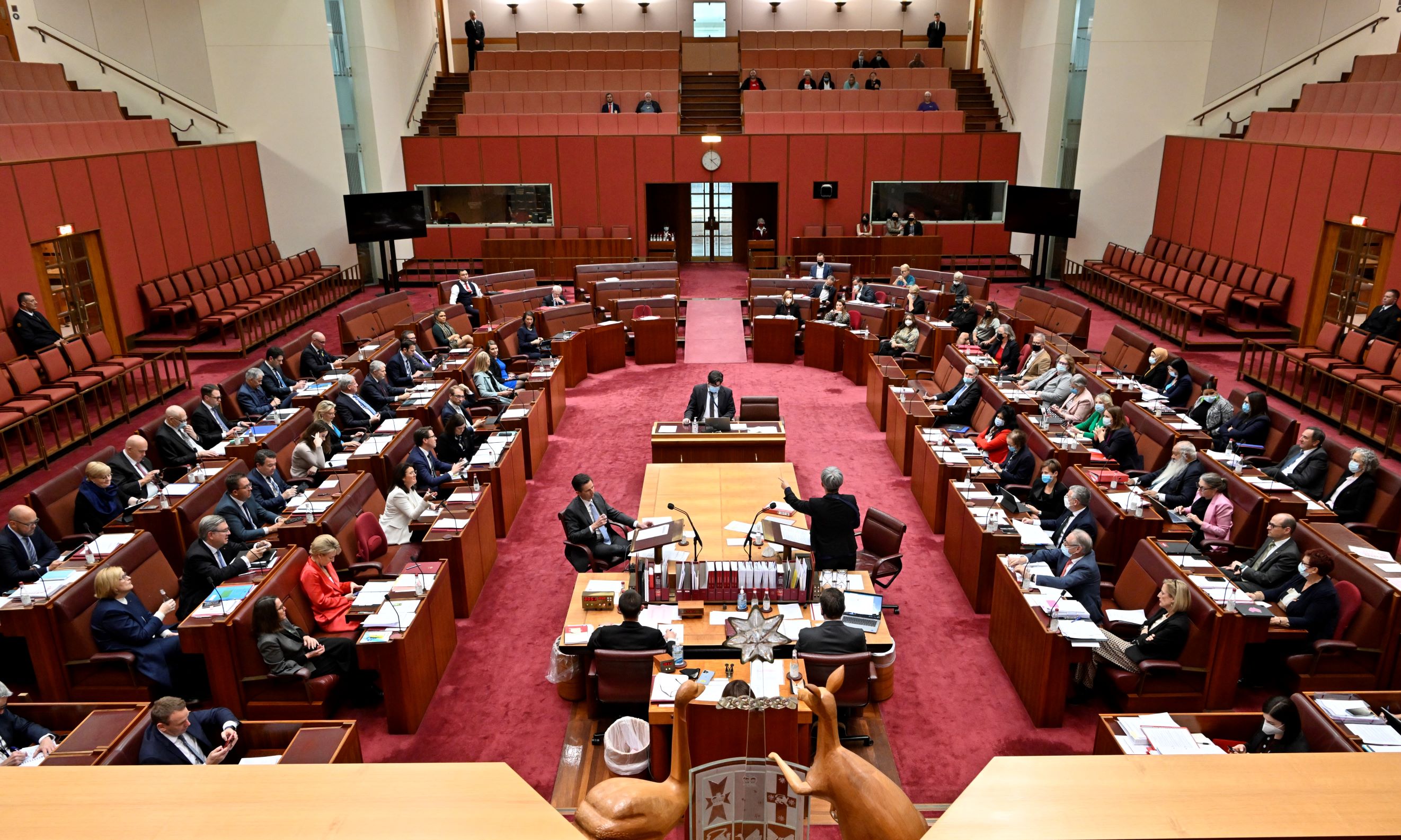Senators
Discover the work of senators in this fact sheet. It explores their role in the Australian Parliament and in the community, their working hours and period of service.
What will I learn?
- A person elected to the Senate is called a senator.
- Senators are elected by Australian citizens to represent a state or a territory.
- Senators work in Parliament and in their community.
Curriculum alignment
Year 5 ACHASSK115
Who are senators?
A person elected to the Senate is called a senator. There are 76 senators elected to the Senate; 12 senators representing the people of each state and 2 senators, each representing the Australian Capital Territory and Northern Territory. Senators can be members of the government, opposition or crossbench. Senators do their job within the Australian Parliament and their state or territory.
When in the Senate, senators are referred to by:
- their last name, for example, Senator Jones
- minister or shadow minister, for example, the Minister for Education
- ‘the Honourable’ if they have been ministers or Presiding Officers.
Senators may also be referred to as members of parliament.
DPS Auspic This image is of a large room with red furnishings. The seats are arranged in a horse-shoe shape around a large central table. There are people sitting in the seats and papers on the desks. Permission should be sought from DPS AUSPIC for third-party or commercial uses of this image. To contact DPS AUSPIC email: auspic@aph.gov.au or phone: 02 6277 3342.The Senate from behind the President of the Senate's chair

Description
Copyright information
Work of senators in Parliament
Senators work long hours when the Parliament is meeting. During sitting weeks, senators may begin their day in Parliament House at 7am and end their day at 10pm or later. There are about 18 to 20 sitting weeks a year. In Parliament their duties include:
- representing the views of the people of their state or territory
- debating and voting on bills – proposed laws
- working on committees that examine important issues
- meeting with team members to decide on party policy
- scrutinising – closely examining – the work of the government
- discussing issues of national and international importance.
Work of senators in their state or territory
To represent the people in their state or territory, senators:
- work on committees to collect information from community organisations and lobby groups that want to present their views to Parliament
- help people who may be having difficulties with issues such as taxes, immigration, health or pensions
- speak with community groups such as support groups and sporting clubs
- visit schools and talk to teachers and students.
Period of service
State senators are elected for a period of 6 years with their re-election occurring on a rotational basis. This means that every 3 years half of the state senators are up for re-election while the other half continue on to complete their period of service. At the end of their 6-year term, this group of senators will face re-election. These half-Senate elections are usually held at the same time as elections for the House of Representatives.
Senators representing the Australian Capital Territory and the Northern Territory have 3-year terms which are the same as for members of the House of Representatives.
Senators can stand for re-election as many times as they like.
What senators do in the Australian Parliament
Tap on the icons to explore the work that senators do in Parliament and their state or territory.












Images: Paul Furness/DPS AUSPIC, Kate Ausburn, Geoffrey Dunn/DPS AUSPIC, The Office of the Prime Minister, Penny Bradfield/DPS AUSPIC, David Foote/DPS AUSPIC.